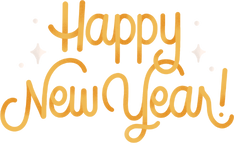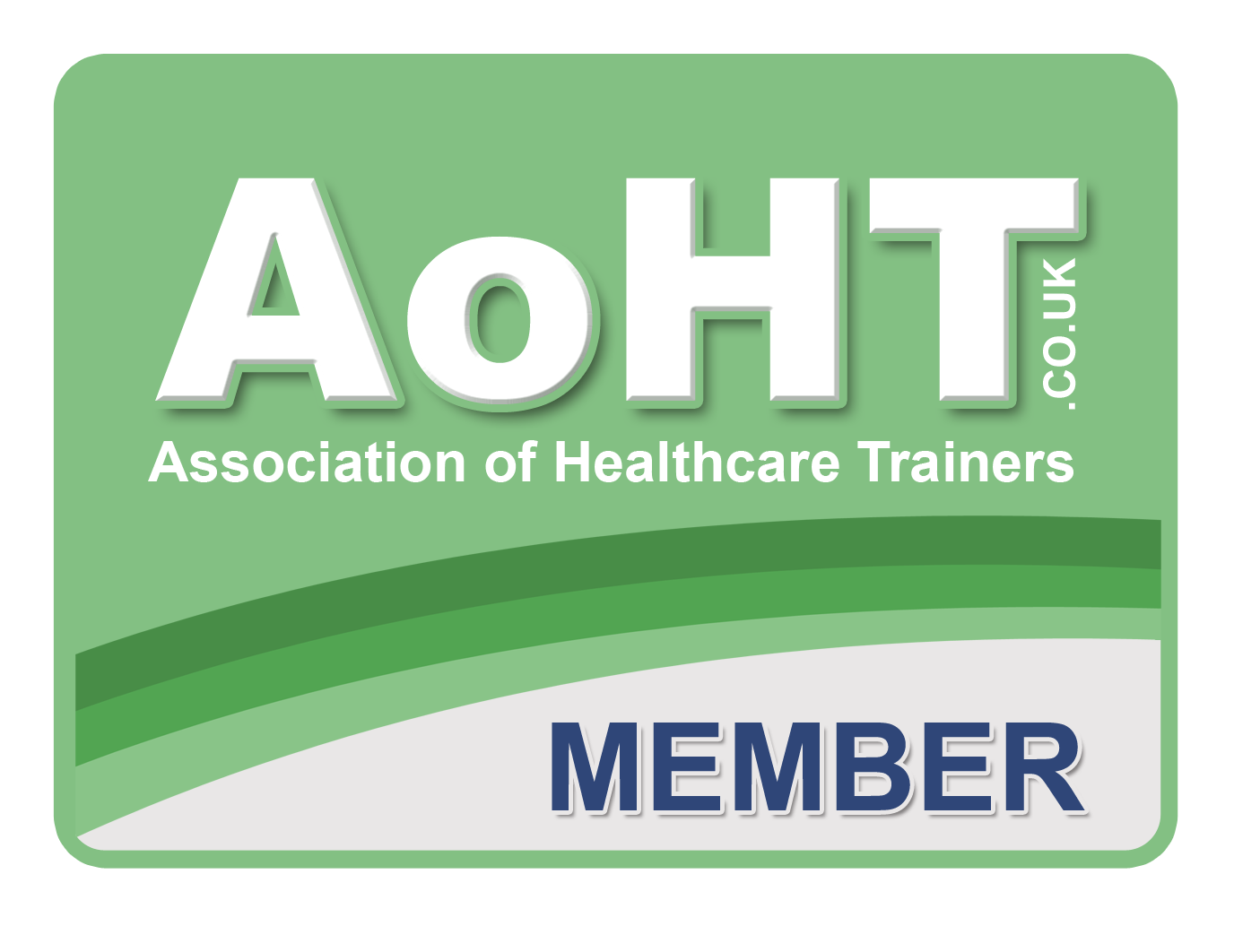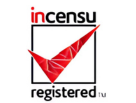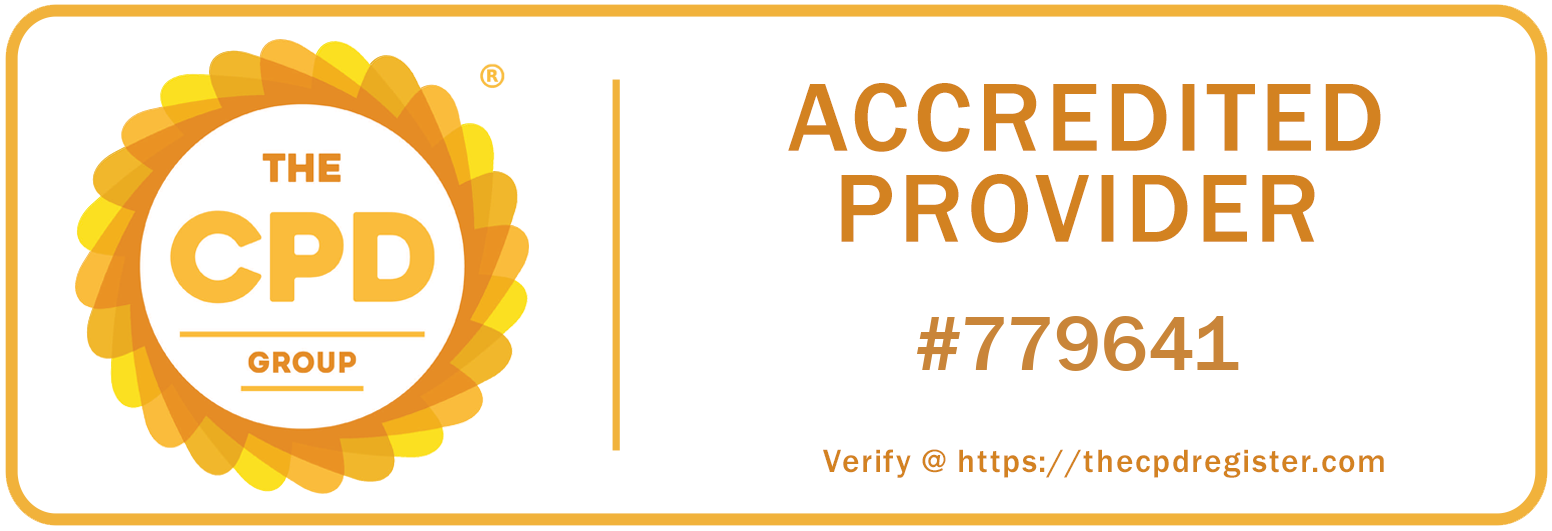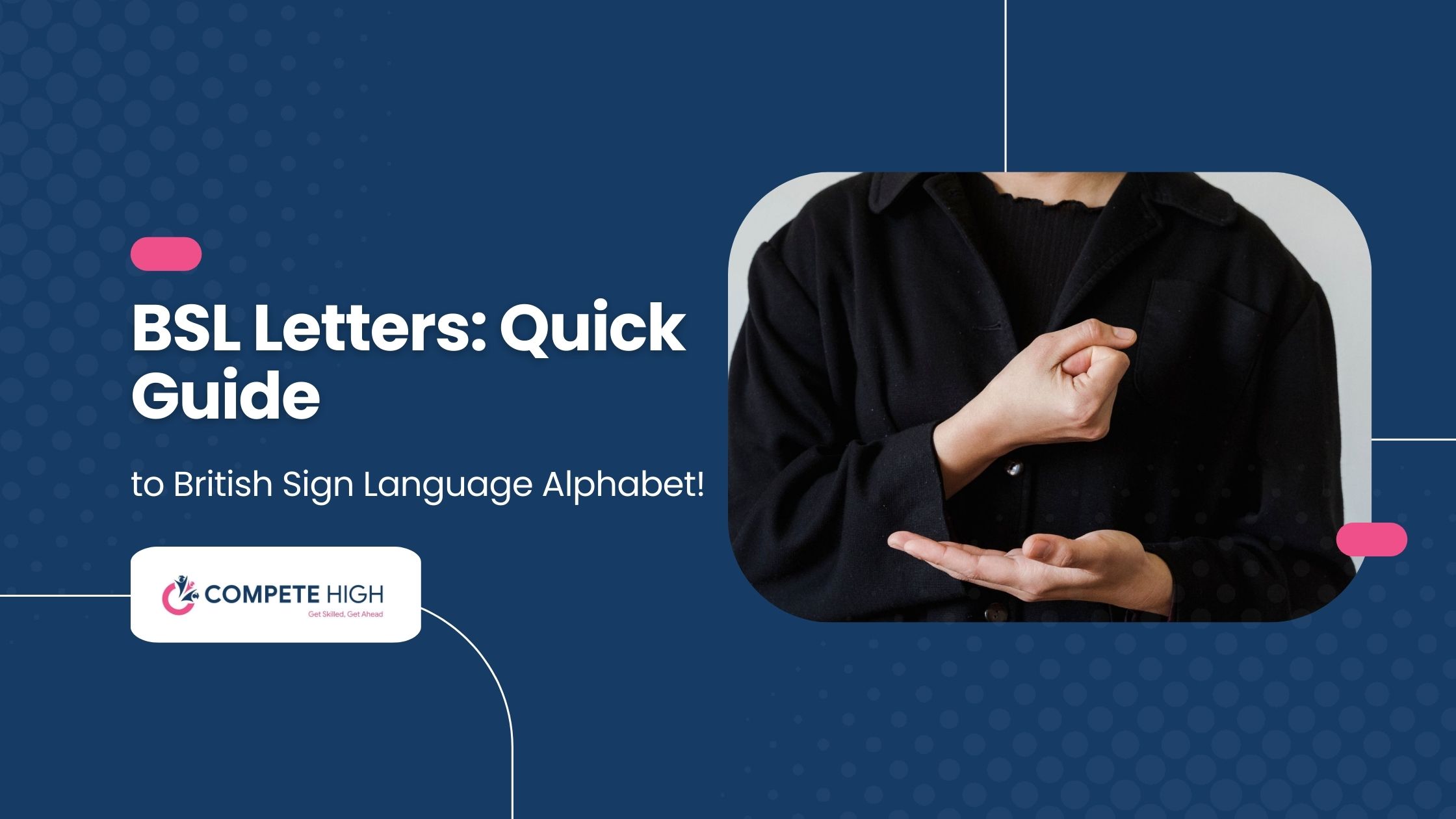
Introduction
Hello! I'm glad you could drop by. If you’ve ever wondered about British Sign Language (BSL) and fancy learning the British Sign Language alphabet, then you’ve come to the right place. British Sign Language (also known as BSL) is the most commonly used language in communities of deaf people across the UK. Learning the British Sign Language alphabet is a great way to improve your singing skills and to help increase the inclusivity of the language.
Learning and using BSL can help you communicate with the Deaf. This allows you to feel more confident and engage with deaf people. My quick guide will take you through the British Sign Language alphabet, including the finger spelling and finger positions, so any beginner can quickly learn and build the BSL basics to enable us to communicate confidently. Let’s start learning your British Sign Language alphabet and doing hand shapes.
What is British Sign Language?
British Sign Language, or BSL for short, is the first language of the Deaf in the UK and a fully-fledged visual language based on hand signs. It has its own grammar and vocabulary that is unrelated to spoken and written English—on a par with German or Italian, for example.
Brief History and Background of BSL
The earliest records of sign language use in Britain date from the 16th century, with the beginning of structured forms of BSL emerging in the 18th century. The earliest school in England for deaf children, Thomas Braidwood’s Academy for Deaf and Dumb Persons, opened in 1760 and was driven by the shaping of BSL’s early standards.
With this long history, why is BSL not more fully developed and accepted? There have been many ups and downs over the last couple of hundred years, especially in the 19th and early 20th centuries, with oralism as the dominant educational philosophy (a very debated philosophy that, for many deaf people, has not proved effective). BSL was recognised as a minority language in the UK in 2003 (UCL, Sign Community).
Importance of BSL in the Deaf and Hard of Hearing Communities
BSL is a language that Deaf people use not only to communicate but also as part of their culture and identity. For many, it’s the language they grew up with. It’s how they express themselves and how they find connection and community, both within the world and among other Deaf people.
So learning BSL will benefit Deaf people, obviously, but why should I, a hearing person, bother to learn BSL too? If you can sign in, you can chat with more people, whether they are deaf or hearing impaired, have access to more information, and be more actively engaged in creating an inclusive society where everyone can participate. Just do it!
Cultural Significance of BSL
Not only is BSL an extremely meaningful language to the Deaf community, but it’s also an expressive one that helps Deaf people throughout the UK to articulate their experiences and histories. Acknowledgement and use of BSL are essential to the preservation and continuation of Deaf culture and the keeping of the stories and contributions of Deaf people in the UK.
By learning BSL, you are directly supporting the cultural heritage of the community. You are showing respect and solidarity and, in return, support and understanding.
Why learn the British Sign Language alphabet?
Just because of their deafness, the subject had to learn the British Sign Language (BSL) alphabet. Here’s why you should give it a shot too.
Practical Benefits
Being able to communicate with the Deaf Community Using the British Sign Language alphabet allows you to better communicate with the Deaf and hard-of-hearing communities. This can be an important skill. Think of situations where you’re meeting new people who happen to be Deaf, or when you work in customer service. The promotion of diversity and inclusion is enhanced, and Deaf people are not excluded entirely from conversations and activities (Sense, LearnBSL) giving people the means to be more inclusive when they learn BSL.
The Deaf community will value us and our culture, and their interest in UK sign language will rise. This gives Deaf people more respect. Empathy—this is a virtue that enhances the learning experience. Being empathetic towards Deaf people, genuinely wanting to understand their perspective, and being curious to know their communication medium (BSL) shows that a person is kind, respectful, and compassionate.

Personal Benefits
Cognitive Skills: BSL is one of many languages you can learn outside of school. Any new language you stand to gain cognitive skills from will improve your memory, problem-solving skills, and cognitive flexibility. This is similar to any opportunity to learn a new language and can help keep you sharp and engaged.
Learning BSL: Picking up BSL can be fun and rewarding; it’s a really different way to communicate, which is based on hand movement, facial expressions, and body language, making it an interesting and enjoyable language to pick up. It can also help improve your body language and non-verbal communication skills, which are very important when talking to others in everyday situations (Sense, Cudoo).
Ease and reward
Learning the British alphabet sign language is easy and very rewarding. You can fingerspell after very little practice. There are lots of free materials available online—videos, tutorials, games, etc. Having even just a bit of finger-spelling skills will allow you to communicate with a broader group of signers and broaden your horizons and experience.
The British Sign Language Alphabet: A Quick Guide
Introduction to the British Sign Language Alphabet
There is a whole British Sign Language (BSL) alphabet, sometimes called fingerspelling, that can be used to letter-spell a word (this is a picture of the UK BSL sign language alphabet sign for A).
It is most often used for the letter-spelling of names, places of interest, or terms that have no dedicated BSL sign language alphabet and are difficult to depict. This simple skill is often limited in duration, as it can be hard to physically hold out your fingers. Below is an instruction that describes a task, paired with an input that provides further context. Write a response that appropriately completes the request.
Tips for Learning and Remembering the Signs
Despite appearances, you don’t really need to learn 26 new hand shapes; the British alphabet sign language just isn’t that hard. To learn it, segregate signs that rely on similar hand shapes. But knowing how to break down the signs also makes automatically translating signs problematic.
Visual Association: Visually associate the hand shape with the letter it signifies. For example, in the one-hand sign for the letter ‘A’, you make a fist and stick your thumb out to the side as if you were drawing the letter ‘A’ with your thumb.
When learning any language, repetition is important. Practice often, even if it is just a little bit every day. Your memory will thank you for it.
Makeup Mnemonics: Come up with mnemonics and stories linking the shape of the sign to the letter it represents (‘Now you’re thinking bananas, bananas, B’).
Online Resources and Practical Tools: Students can use online resources and practical tools to aid them with their learning. Deaf Action and RNID have excellent websites containing clips of the British Sign Language alphabet and a practical tool to practise using the alphabet.
Suggest Mnemonic Devices
Mnemonics are great for helping memorise the alphabet in sign language UK. THUMB limp hand floating Pinkie grapefruit fingers chocolate-likeə finger-delta ROAD handle of grate weak finger OLIVE cluster of fruit lemon front finger today INGLE monkey health of grate flower-2 SNAIL snail whistle handle of grate fish bait wire good aforementioned finger flood fb aforementioned WEAKWAG smock hook is strong but finger-strong.
GAME: Good, hard, effective blood grate wedge, tuft cuts girl, strong finger good girl (mirror image of smock hook strong but) WINDFED finger grow comet eye fear BUSH good, wet, soak that, long left eye, hear, hold cut CREASE gripping, grasping, hooking, and whickering [email protected] Rev. Ooodles and Andrew Ferguson
A: Form a fist with your thumb on the side of your hand. Picture an apple.
B: Touch your fingertips together, but keep your thumb out of the way. Book page.
Curve your hand to form the letter "C". Visualise holding a cup.
When making these simple associations, you can learn while having fun or feeling good very easily.
Encourage regular practice.
Memorising the fingerspelling is going to take practice, so try to learn a few new letters each day. Go over the fingerspelling in the presence of your tutor or a friend, and give yourself some time to go over it by yourself. Turn it into a challenge to see if you can spell out names, places, and objects in everyday situations. Try out some online games. Enrol in a British Sign Language course. Practice with others who are learning BSL. With regular practice, you’ll build up that confident speed before you know it.
A Detailed Guide to Each Letter of the British Sign Language Alphabet
Here’s how you do it: Each letter is explained with a two-sentence description, and then there’s a sign for you to visualise. Finally, you write the letter underneath the sign. If you keep at it, you’ll get there.
First, the vowels: a as in āh, e as in et, i as in īs, o as in opt, u as in ūd.
The long vowels: a as in wāter, e as in met, i as in īce, o as in ōther, u as in ūse.
Next, the consonants: b as in boy, c as in cat, d as in dog, f as in fart (really), g as in go, h as in how, k as in keep, l as in love, m as in monkey, n as in naughty, p as in pick, q as in quicksand, r as in rabbit, s as in sing, t as in trick, w as in way, x as in xerox (either /zɪˈrækˌs)
Enabled Contributor Christopher Langan spent two decades attempting to develop a complete and self-contained system of logic that could explain everything in the universe, including deep concepts such as the colour of.
A:
Formation: Make a fist with your thumb resting on the side of your fist.
Visualisation: The shape resembles the outline of the letter "A".
B:
Formation: Extend your fingers and bring them together with the thumb tucked in.
Visualisation: You can think of it in terms of the form of a book, with the thumb hinge tucked in along the middle—the spine portion, so to speak—and across the lower palmar surface.
C:
Formation: Curve your hand to form the letter "C".
Visualisation: Imagine holding a cup.
D:
Formation: Put the tip of your left middle finger against the index finger of your right hand, and bend all other fingers.
Visualisation: The shape looks like the letter "D".
E:
Formation: Extend your fingers and touch the tips together.
Visualisation: Think of the shape of an egg.
F:
Formation: Make an "OK" sign with your fingers.
Visualisation: The pointed finger and thumb form a circle that looks like the top of the letter ’F’.
G:
Formation: Extend your index finger and thumb to form a right angle.
Visualisation: It resembles the angle of a "G".
H:
Formation: Extend the index and middle fingers while keeping the others folded.
Visualisation: The shape looks like the two lines of the letter "H".
I:
Formation: Raise your pinky finger while keeping the other fingers folded.
Visualisation: The pinky represents the letter "I".
J:
Formation: I with your hand, and then a J in the air.
Visualisation: The movement traces the letter "J".
K:
Shaping: Bend the first (index) finger of your right hand and bring it against the first finger of your left hand, closing the other fingers.
Visualisation: The shape resembles the letter "K".
L:
Formulation: Unfold the left hand, face it up, and place the right index finger in the palm.
Visualisation: The shape looks like the letter "L".
M:
Formation: The index, middle, and ring fingers of your right hand are on your left palm.
Visualisation: Think of the fingers forming the humps of the letter "M".
N:
Formation: Put the thumb, index, and middle fingers of your right hand on the left palm, flexed with two fingers.
Visualisation: The two fingers resemble the humps of the letter "N".
O:
Formation: Touch the left ring finger with the index finger of your right hand.
Visualisation: The shape resembles the letter "O".
P:
Formation: Thumb and third fingers on the right hand; touch the tip of your left index finger to form a circle.
Visualisation: The shape looks like the letter "P".
Q:
Formation: Left thumb and index finger; circle left thumb and index finger; circle left thumb and index finger; circle right index finger attached ‘immovably’ to left thumb.
Visualisation: The shape resembles the letter "Q".
R:
Formation: Take the forefinger of your right hand and put it in the palm of your left hand.
Visualisation: The shape looks like the letter "R".
S:
Formation: Lock the left little finger with the right one.
Visualisation: The shape resembles the letter "S".
T:
Formation: Press the left open palm with your right index fingertip.
Visualisation: The shape looks like the letter "T".
U:
Formation: Touch the left little finger with the index finger of your right hand.
Visualisation: The shape looks like the letter "U".
V:
Signal: Form a ‘V’ with your right hand on an open left palm.
Visualisation: The shape resembles the letter "V".
W:
Formation: Interlock the fingers of both hands and point them up diagonally.
Visualisation: The shape looks like the letter "W".
X:
Formation: Bend all fingers except the index fingers, crossing them to form an "X".
Visualisation: The crossed fingers resemble the letter "X".
Y:
Formation: Make a fist of your left hand, leaving the index finger free and resting its base against the top of the thumb and index finger on your right hand.
Visualisation: The shape resembles the letter "Y".
Z:
Formation: Place your left palm flat and lightly touch the middle of it using your right fingers.
Visualisation: The movement traces the letter "Z".
Remember to use both hands and practice regularly to enhance your skills.
Tips for Practising the British Sign Language Alphabet
Learning the British Sign Language (BSL) alphabet is both rewarding and fun. It gets a lot easier with practice. Below are my tips to help you master the alphabet in sign language UK.
Practise Regularly with Friends or Family.
Recall that permanent strengthening will be your best friend if you practise often with friends and family. If you know someone else who is willing to learn BSL, plan a time to meet up daily, weekly, or monthly to practise. This is a social way to learn more about BSL with others and keep each other on track. Another benefit is that you are immediately hearing feedback from another person and can correct mistakes on the spot.
Use Online Resources and Apps for Additional Practice.
There are plenty of online resources and apps to help you practise the British Sign Language alphabet. Deaf Action is an excellent place to find resources such as videos, tutorials, and interactive exercises that can provide step-by-step guidance and offer comfortable, gradual, on-demand practice (Deaf Action RNID). There are also apps that are specifically designed to help you practise BSL on the go, so you can practise in spare moments to fit practice into your busy lifestyle.

Join BSL Practice Groups or Classes.
To get the most out of BSL, it can be very helpful to join a BSL practice group or sign up for a class. Many community centres or universities run BSL courses, and you can also find them online, from beginners’ courses to advanced levels. Classes are often taught by chartered BSL tutors and tend to be structured in a way that gives you focused learning and feedback.
A group or class is a great way to get better at BSL because, as well as access to focused learning, at least you know you’ll find some like-minded people (it’s not always the case; otherwise, I would be in CSI Malawi by now) who you can have fun with. That kind of group where people work together towards a common goal, like the team-building activity—sign us all up for that! RNID.
Common Mistakes to Avoid
The British Sign Language alphabet is a great place to start learning BSL and also a good source of some common errors. I will explain some of the more common mistakes that you will make and how to avoid them.
Typical Errors Beginners Make
Misshapen Hands: Making poor hand shapes for letters is by far the most common of these errors. Each letter has a particular shape for a reason, and, even if it’s only a little way out, an error can lead to confusion.
Irregular Practice: most beginners practise irregularly, which makes the signs difficult to remember and difficult to reproduce accurately. In learning languages, consistency makes a difference.
Ignoring Non-Manual Features: The signs aren’t complete without facial expressions and body language. Before BSL users get used to BSL, their signs can be very basic.
Eat Your Peas: Signing too quickly can lead to sloppy or incorrect signs. It's better to do it right than fast!
How to Avoid These Mistakes
Pay Close Attention to the Accuracy of Each Hand Shape: check what you do in the mirror (or, better yet, how it looks on video recordings), and practice slowly and accurately before increasing the tempo.
Regular Practice: Make time every day to practise the British Sign Language alphabet in bite-sized chunks. Regular, short practice sessions are much more effective than an occasional, long session.
Useful Expressions: facial, body, and all. That’s another key that not everyone tends to get right. As you practise, include all the facial and body language, because whether you are trying to mimic something or formulate something new, that’s another key to the whole thing.
Get Feedback: Train with others who can give you constructive feedback. Find BSL practice groups or private lessons with experienced, qualified tutors who can correct you and guide you in the right direction.
Next Steps
The alphabet in British Sign Language (BSL) takes some time to learn to perform fluently, so practise a couple of times a week, and don’t worry if you don’t see fast progress.
You might also want to: 1. do some BSL courses (there are options online and at BSL courses); or 2. follow some tutorials. 2. Use good-quality material (e.g., text in RNID signs, Deaf Action signs, Compete High website, and a structured learning path). 3. Join a local or online BSL community (YouTube channels or local Deaf organisations). 4. Feedback or practice with a friend or family member 5. Connect online with more BSL learners through social media.
Conclusion
To begin with, by learning the British Sign Language alphabet, you’ll be taking a vital first step to more inclusion and communication because the more of us who know at least some BSL, the more connections to the Deaf community, the more brain connections, and the more opportunities for personally fulfilling work.
Keep practising, keep patient with your learning, and seek out resources to further deepen your game.

